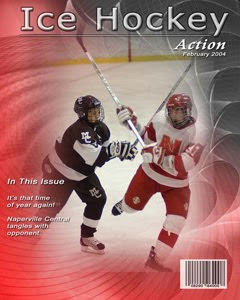First of all, if you ask a professional photographer they will tell you that there never is perfect lighting for photography. The one exception you may hear is when that lighting is controlled. Photography requires a few skills to make your prints look professional. One part of making a print professional is that lighting. Lighting in photography takes a little planning and understanding of a few techniques. You best subject or object might not turn out that way if the proper light does not help to illumiate the area. Below are a few tips on using light to your advantage.

First you must decide if you will use artificial or sunlight. If you are using sunlight you will rely on the Kelvin scale to determine the temperature of light and therefore the color of light. You may also want to do a white balance check on your camera. Most digital SLR's today allow for white balance adjustment or correction. The color of light is important to maintaining the colors you see around you. For instance the warmer the light the more red/orange the light will be, thus you may need to pick the time you will go out and shoot photographs. Outdoor lighting offers so many different times to take pictures depending on your need. I personally like the first 2 hours the sun is up and the last hour or two before sunset.
Next a photographer needs to understand the sun’s color scale. Pictures tend to lead the viewer towards certain feelings; often softer colors evoke more emotion. So understanding the suns impact on the colors will help you find the correct time of day. The sun evokes blue hues in the morning hours, while closer to noon you will find more neutral colors. The neutral colors can take away some of the definition you want in your print. Knowing how you want the image to turn out will also help you determine when you wish to take the shot.
When using natural light you will need to work with the angle and direction of the sunlight. If the sunlight is broad and diffused you will have softer shadows while the more narrow the light is focused the more shadow you can create. Often at noon when the sun is in mid arc you lose definition of the subject. The subject could look grainy. This is why shadow is used; the shadows can give you more quality to the print if used correctly. This adds to the beauty of your pictures.
You can also modify sunlight through certain techniques. Modifying sunlight when taking portraits outdoors requires the use of a background or reflector. I personally have a reflector that is silver on one side and white/gold on the other side. At other times you may wish to diffuse the light. Come to think of it, even when you do not have the perfect lighting for photography, its amazing what you can do even when the sun is at full force if you have the right equipment (or make that equipment yourself). You may need to block the sun if it interferes with you or your subject’s sight. You might also bring in a white surface to fill the shadows. Landscape photography requires less work as compared to portraits. In fact using natural sunlight for landscape photography without modifications can yield you a better photograph.
Landscape photography uses nature to provide the light and shadows. This is why you need to understand the light scale and temperature. Time is the most important aspect of using sunlight. To understand natural lighting you need to understand the affects the sun will have at certain times of the day. When shooting portraits, you can always move around your subject to find the best angle with the sun.
Photography is an art that requires techniques and practice. Lighting is a major part of photography, especially when you are using natural light. Sunlight can bring plenty of shadows or take them away depending on the time of day. Photography is an interesting hobby and profession which when practiced properly will give you plenty of prints and gratifying moments which can be shared for a lifetime and beyond.
Whether photography is your passion or hobby, you owe it to yourself and family to take the best possible pictures that you can. You may simply want to take better images or make money doing something you love. This ebook can help with both.

Whether you are a professional or novice photographer, with the right knowledge and guidance, you can produce some exquisite pictures with the proper lighting. With this in mind, choose your lighting according to your needs and the needs of your subject or object. You may just find that you make the perfect lighting for your photography.






